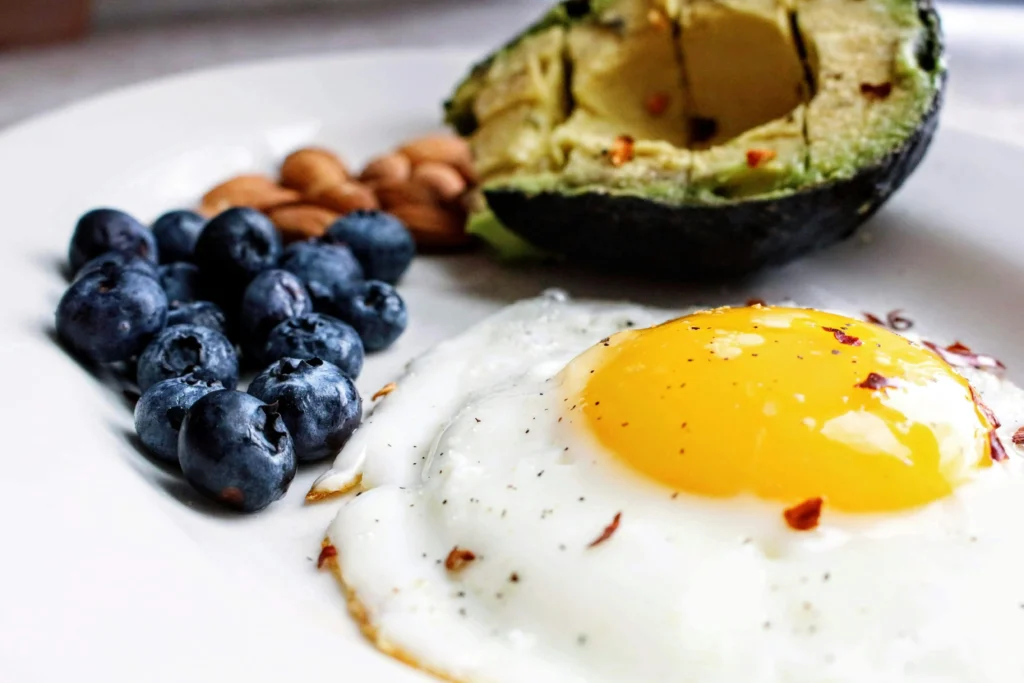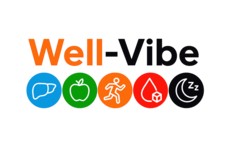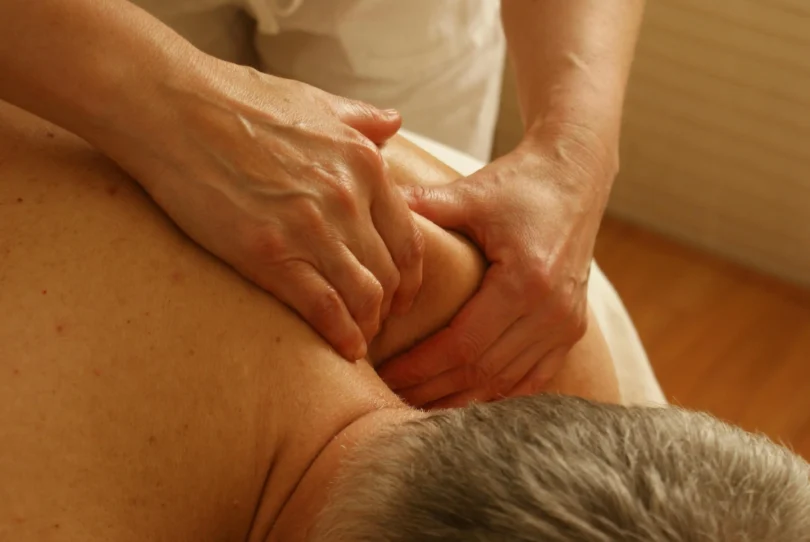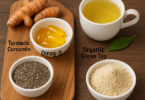The Breaking Point
That morning was different. My alarm rang out at 5:30 AM, but my body would not comply. Exiting the bed required the ascent of a mountain – lower back cramped, shoulders in knots, and legs weighed down with lead. I’d been disregarding these warnings for many months.
“What are recovery foods anyway? Just eat protein, yeah?” I’d wonder naively. “Muscle recovery is for those who don’t work hard enough,” I’d tease the gym partners. “I’ll do those recovery stretches later,” I’d vow to myself – but later would never arrive. That day was the wake-up call I needed. I limped through my workout and winced through meetings, and I finally admitted to myself what my body was screaming: recovery is not optional in your 40s – it is the key. What came next revolutionized the way I think about fitness, health, and life
Why Does Recovery Feel Different After 40?
Remember when you used to push through a difficult workout, shower, and immediately dive right back into the day with no recovery time needed. Those days feel like a memory, don’t they? After 40, the rules of the game change in the body.
Recovery is not a luxury it is a necessity. The processes of healing in the body become slower. It takes more time for muscles to rebuild. Even the nervous system requires more time to recover. It is not in your imagination. There is science to support this. According to a study in the American Journal of Sports Medicine, once you are over 40, you require nearly 50% more recovery time between rigorous workouts than 20-somethings.
Here’s the good news. Mayo Clinic research indicates that if over 40-year-olds make recovery a priority, they can match much younger athletes. Even better still, research in the British Journal of Sports Medicine determined that effective recovery habits reduced the risk of injury more than half in older athletes . The bottom line is obvious: smart recovery not only gets you feeling better it keeps you stronger, for longer.
When I Finally Got It
“You’re not 25 anymore,” I was told with a smile of recognition by my physical therapist as I explained this regimen to her. “Your body can’t rebound the way it used to.” This struck home. Hard. I’d been exercising as if I was in my 20s, disregarding the signals from my own body. I was so intent on pushing myself that I’d forgotten to let my body repair itself. The truth is I wasn’t weakening I was not allowing myself proper time to recover
The Recovery Trinity: What Actually Works

1. Nutrition: The Foundation of Healing
Bold truth: The window for nutritional recovery after 40 narrows significantly.
That post-workout protein shake I’d been casually sipping an hour after training? Science says I’d been missing the optimal 30-minute window when our bodies are most receptive to nutrients that accelerate repair.
My new approach became systematic:
Instant recovery (0-30 minutes )
- After 20-25g complete protein
- Quick-absorbing carbohydrates (3:1 carb-to-protein ratio)
- Hydration with electrolytes
Extended recovery (1-3 hours post-workout)
- Anti-inflammatory foods (fatty fish, berries, turmeric)
- Complex carbohydrates to replenish glycogen
- Healthy fats to aid hormonal balance
- Collagen protein (10-15g) to aid in joint and connective tissue repair
Ongoing Recovery (24+ hours)
- Increased total protein intake (1.6-1.8g per kg of body weight)
- Daily collagen with added vitamice C to increase absorption
- Daily consistency with water intake. Increased water intake even on chilly days
- Strategic nutrients (magnesium, zinc, vitamin D
The transformation was impressive. Supplementing with collagen in my recovery nutrition was especially life-altering for my connective tissue and joints two areas that were becoming increasingly bothersome in my 40s. Studies reveal that collagen peptides can actually make a big difference in joint comfort and mobility, especially if you pair them with vitamin C for proper absorption. The aching soreness that became my unwanted friend dissipated. I stabilized at a new level of energy, and that dreaded nap time slump disappeared in weeks.
2. Movement Medicine: The Paradox of Recovery
Here is the counterintuitive truth I learned: strategic movement prepares recovery more effectively than pure rest. My previous routine of rigorous exercising and then falling on the couch was actually prolonging the recovery. My muscles were becoming tight, the blood was pooling in the form of inflammation, and the one process that delivers nourishing blood to injured tissues was becoming stagnant. The key was to apply what exercise physiologists term “active recovery”:
Morning mobility routine (5-10 minutes)
- Gentle joint movements
- Dynamic stretching sequences
- Activation of the parasympathetic system through breathing exercises
Midday movement snacks (2-3 minutes)
- Targeted stretches for specific problem areas
- Frequent walking breaks every 45-60 minutes
- Simple Yoga Poses to Reverse Sitting
Evening Recovery Ritual (15-20 minutes)
- Foam rolling major muscle groups
- Static stretches (holding each stretch 30-60 seconds)
- Resistance band exercises for circulation
These weren’t gruelling sessions, just mindful movement that kept my body from stiffening while enhancing blood flow to healing tissues.
3. The Sleep Revolution: Nature’s Ultimate Recovery Tool

The most significant transformation of my process of recovery occurred from the most basic location: the bedroom. Sleep science has exploded in recent years, revealing that the quality of our downtime directly impacts our body’s ability to repair itself. A landmark study from the University of Chicago found that proper sleep can increase muscle recovery rates by up to 60%
My sleep transformation involved:
Creating a sleep sanctuary
- Blackout curtains and cooler bedroom temperature (18-20 °C = 65-68°F)
- Eliminating all electronic devices and blue light sources
- Using White Noise to Blank Out Environmental Disruptions
Creating a wind-down routine
- Setting a “recovery alarm” 60 minutes before sleeping
- Gentle stretching of the areas of tension
- 4-7-8 technique (breath work) to elicit relaxation response
Sleep timing and sleep duration optimization
- Consistent 7.5-8.5 hour sleep window
- Aligning sleep hours with natural circadian cycles
- Weekend sleep timing within 30 minutes of weekday routines
The outcomes were telling. Stiffness in the morning was halved. The downtime between hardcore workouts is reduced from 72 hours to 48 hours. And that middle-age brain fog that was sneaking up on you? Dramatically eliminated.
The Emotional Road To Recovery
Recovery is not only physical, it is also deeply psychological. Perhaps the most difficult lesson I learned was this.
Releasing the “No Pain, No Gain” Mentality
I’d conditioned myself for decades to think that pain was the cost of advancement. It felt shameful to take a recovery day. I’d push past the pain, disregarding the red flags, sporting the aches as a badge of honor. It needed to be rethought completely:
- Traditional assumption: Recovery is a necessary evil that compromises on “true” progression
- New insight: Recovery is where adaptation occurs; it’s actually when we become stronger
- Traditional assumption: Being resilient requires pushing past pain
- New insight: Wisdom in discriminating between productive uneasiness and injury indication
- Old assumption: More is better
- New insight: Sustained intensity paired with planned recovery gives the best outcomes
This switch took place over time. It was through micro-experiments, wherein I practiced proper recovery and observed enhanced functioning.
Finding Identity Beyond the Struggle
We have a challenging reality in midlife: we have constructed our identities in terms of pushing boundaries instead of respecting them.
I’m the person who does not miss a workout. “I push through, no matter what.” “Pain is simply weakness departing the body.”
They served me well in my 20’s and 30’s, but in my 43 years, they guided me into harm and burnout instead. The option was not giving in to aging, but adapting with it.
My new mantras were:
- “I’m the individual who trains wisely.”
- “I take notice of my body’s wisdom.”
- “Recovering is where miracles take place.”
This adjustment didn’t weaken me, actually; it made me more sustainable. Where a flash-in-the-pan and a lifelong champion tend to differ is in the area of recovery intelligence, rather than in the intensity of training.
Practical Recovery in a Busy Life
The greatest recovery program in the world is worthless if it’s not compatible with your real-life circumstances. As a busy parent with a challenging job, I required solutions for the real world, not theory.
The 80/20 Recovery Principle
After trying out a multitude of protocols for recovery, I learned that about 20% of the recovery practices yield 80% of the benefit. This was a relief. Rather than an either/or formula, I honed in on high-impact practices with maximum return for low time investment:
Fixed daily habits (10-15 minutes total):
- 5-minute morning mobility routine
- Post-workout protein timing
- 10 minutes of pre-sleep foam rolling
• Basic weekly habits (45-60 minutes)
- in aggregate One single active recovery session
- Epsom salt bath for absorbing magnesium
- Healthy Meals concentrates on anti-inflammatory foods
Monthly recovery investments (2-3 hours):
- Massage therapy or bodywork session
- Recovery metrics evaluation
- Adjusting the program according to the outcomes
This practical mindset ensured I was consistent with what was most important instead of spottily enacting a flawless but non-sustainable program.
Technology as an Ally for Recovery
The recovery tech industry has blown up, with everything from compression boots to electrical muscle stimulation available. While we tried a bunch of them (and wasted money on a few), this was what proved effective:
Worth the investment: game-changers:
- Heart rate variability monitoring (nervous system recovery measure)
- Basic foam roller with a rumbling vibration feature
- Red light therapy panels for cell restoration
• Surprisingly effective low-tech solutions:
- Tennis ball for trigger point release
- Freezing metal water bottle as a targeted ice massage
- Basic mobility break timing app
The most critical technology, though, was the simplest one of all: a recovery journal detailing soreness, energy, and the quality of my sleep. This provided information that showed patterns previously invisible to me, enabling me to adjust my approach
The Ripple Effect: Beyond Physical Recovery
Something surprising occurred as I became a master of physical healing, the principles started affecting the rest of my life.
The cycles of stress and recuperation that regulate our muscles also govern our mind and emotions. I started taking breaks from intense periods of work by scheduling “white space” in my agenda for mental recuperation. I engaged in emotional management practices imitating physical cool-down procedures.
The outcome was a more sustainable path in all things: work, relationships, creativity, and personal development.
The Road to Recovery Begins Today
At 40+, we have a choice. We can press on with the old methods and listen as our bodies revolt, or we can take advantage of the science of rejuvenation and discover a new form of vitality based on a sustainable rather than a strained model.
This decision changed my understanding of myself, of getting older, and of fitness. My chronic injuries, once my inseparable companions have diminished. My energy has leveled out. And most astonishingly, my performance has increased not in spite of prioritizing recovery but because of it. Your path to healing will be uniquely yours. It will require experimentation, patience, and frustration at times. But this I can most confidently promise you: on the far side of this path awaits a relationship with your body based on wisdom, not willpower, on partnership, not domination.
The question is not how much it will cost to help but how much it will cost not to help.
Ready to Start Your Recovery Revolution?
• Start with one activity in one recovery area (movement, nutrition, sleep)
• Monitor your progress over 21 days
• Adjust according to what your body feels
• Build your customised recovery system incrementally.
Recovery isn’t what occurs when you are finished with life it allows you to live it. Your best years can be ahead, as long as you learn the art and science of coming back stronger. After all, it’s not about how hard you can push; it’s about how well you can recover.
Join our community here for weekly science-backed health tips, free meal plans, and carefully curated product recommendations delivered straight to your inbox!
Disclaimer:
This blog post is for informational purposes only and is not intended as medical advice. Always consult with a qualified healthcare professional before making any changes to your diet, exercise routine, or healthcare plan. The information provided is based on personal research and experience and may not apply to everyone







